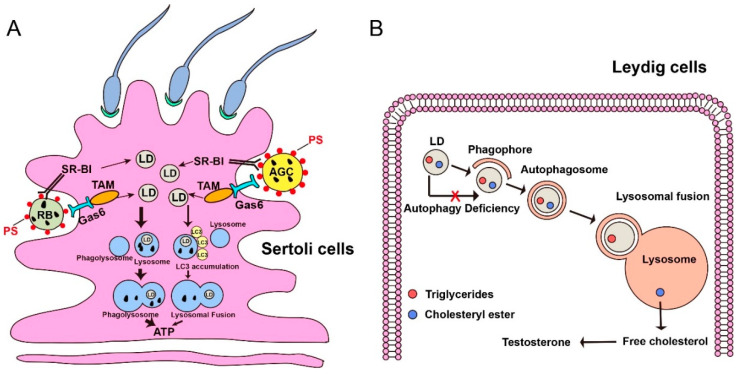Figure 3.
Lipophagy promotes spermatogenesis in Sertoli cells and regulates the synthesis of testosterone in Leydig cells. (A) During spermatogenesis, apoptotic germ cells (AGCs) and residual bodies (RBs) are phagocytosed by Sertoli cells by the SR-BI/PS (Class B scavenger receptor type I / Phosphatide) system or TAM/Gas 6 (Translocation and assembly module/Growth arrest-specific 6) system. The lipid droplets can release from the breakdown of engulfed AGCs and RBs. In this condition, most LDs fused with the lysosome to form phagolysosome to generate energy for Sertoli cells, which further supports germ cell and spermatogenesis. While, minor LDs can have an LC3 accumulation signal and then fuse with the lysosome to produce ATP for energy support. PS, a type of phospholipid. LD, lipid droplet. Bigger arrow, a major pathway to degrade LDs in Sertoli cells. Smaller arrow, a minor pathway to degrade LDs in Sertoli cells. (B) LDs are composed of cholesteryl ester and triglycerides, which are localized in the Leydig cells. In normal conditions, lipophagy can degrade cholesterol esters into free cholesterol, an essential substrate for testosterone synthesis. When autophagy deficient, the substrate of testosterone will decrease due to the failure of lipophagy.

